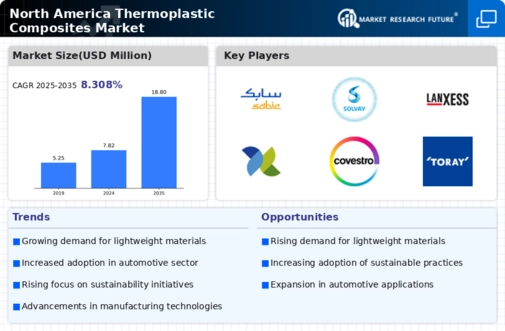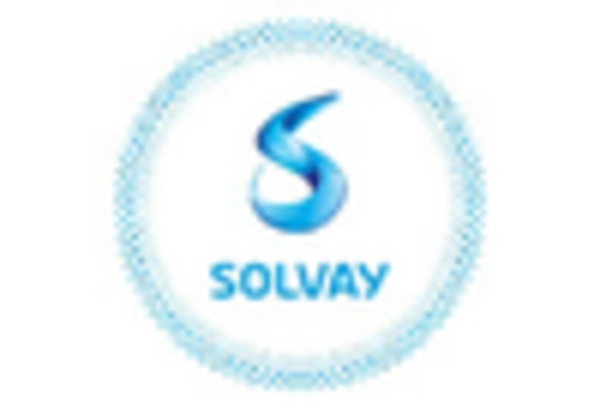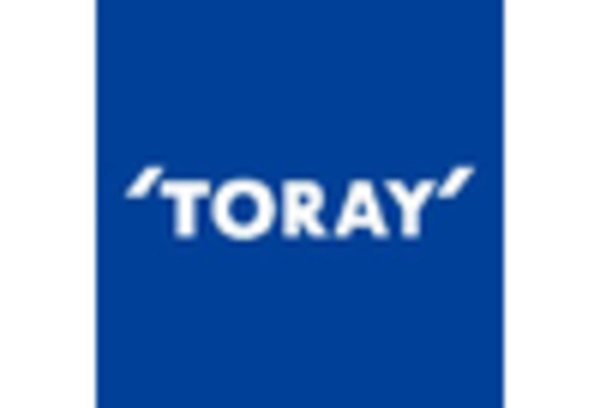Growing Demand in Automotive Sector
The automotive sector in North America is experiencing a notable shift towards lightweight materials, which enhances fuel efficiency and reduces emissions. Thermoplastic composites are increasingly favored due to their excellent strength-to-weight ratio and recyclability. In 2025, the automotive industry is projected to account for approximately 30% of the thermoplastic composites market. This trend is driven by stringent regulations aimed at reducing carbon footprints, compelling manufacturers to adopt advanced materials. As electric vehicles gain traction, the demand for thermoplastic composites is likely to surge, given their ability to meet the performance requirements of modern automotive designs. Consequently, the automotive sector serves as a pivotal driver for the thermoplastic composites market, fostering innovation and investment in this material category.
Advancements in Manufacturing Technologies
Recent advancements in manufacturing technologies, such as 3D printing and automated fiber placement, are revolutionizing the production of thermoplastic composites. These innovations enable manufacturers to produce complex geometries with reduced waste and improved efficiency. In 2025, it is anticipated that these technologies will enhance the production capabilities of the thermoplastic composites market, potentially increasing output by 20%. The ability to rapidly prototype and manufacture components tailored to specific applications is likely to attract a broader range of industries, including consumer goods and electronics. As manufacturing processes evolve, the thermoplastic composites market is expected to benefit from increased adoption and diversification of applications.
Rising Focus on Renewable Energy Solutions
The renewable energy sector in North America is increasingly adopting thermoplastic composites for wind turbine blades and solar panel structures. These materials offer superior durability and resistance to harsh environmental conditions, which is essential for maximizing the lifespan of renewable energy installations. In 2025, the renewable energy sector is projected to contribute approximately 15% to the thermoplastic composites market. As the push for sustainable energy solutions intensifies, manufacturers are likely to invest in thermoplastic composites to enhance the efficiency and reliability of renewable energy systems. This growing focus on renewable energy applications serves as a significant driver for the thermoplastic composites market, fostering innovation and expanding market opportunities.
Regulatory Support for Lightweight Materials
Regulatory frameworks in North America are increasingly favoring the use of lightweight materials across various industries, particularly in transportation and construction. These regulations aim to reduce greenhouse gas emissions and promote energy efficiency. In 2025, it is estimated that regulatory support will drive approximately 10% growth in the thermoplastic composites market. As companies strive to comply with these regulations, the demand for thermoplastic composites is likely to rise, given their favorable properties. This regulatory environment not only encourages innovation but also positions thermoplastic composites as a viable solution for industries seeking to enhance sustainability and performance.
Increased Investment in Aerospace Applications
The aerospace industry in North America is increasingly integrating thermoplastic composites into aircraft manufacturing due to their lightweight properties and resistance to environmental factors. In 2025, the aerospace sector is expected to represent around 25% of the thermoplastic composites market. The shift towards more fuel-efficient aircraft designs necessitates the use of advanced materials that can withstand high stress while minimizing weight. Furthermore, the ability to recycle thermoplastic composites aligns with the industry's sustainability goals, making them an attractive option for manufacturers. As airlines seek to reduce operational costs and improve performance, the demand for thermoplastic composites in aerospace applications is likely to grow, thereby driving the overall market.


















Leave a Comment